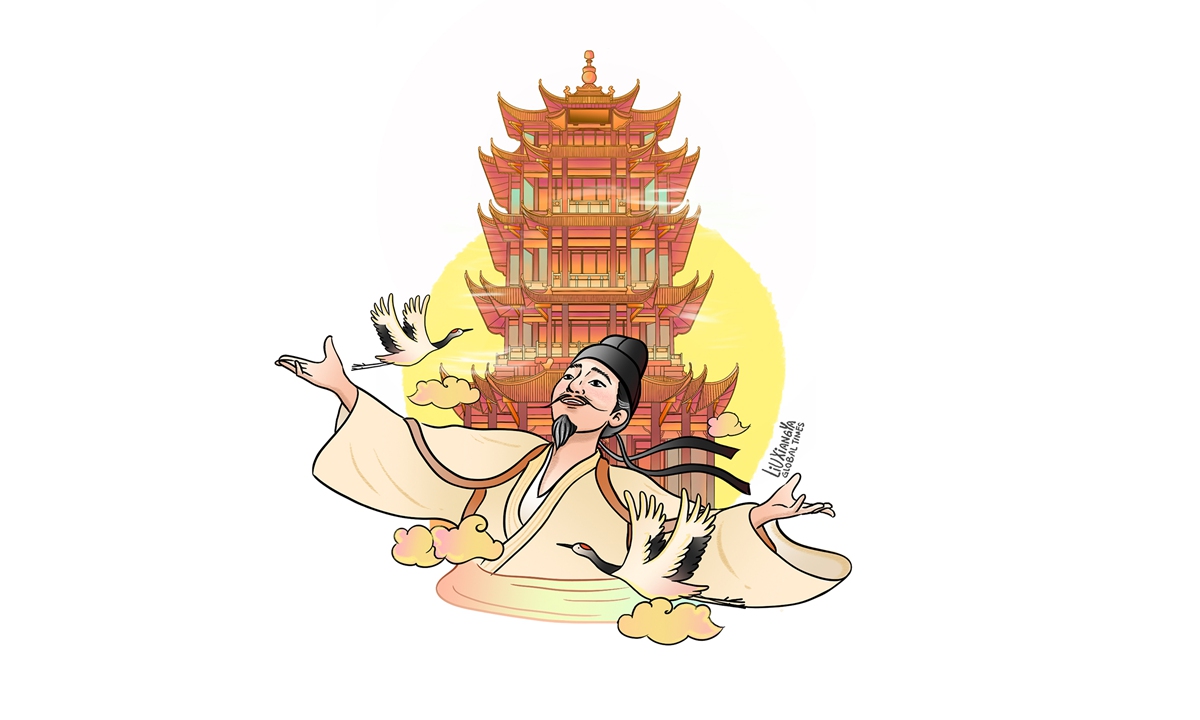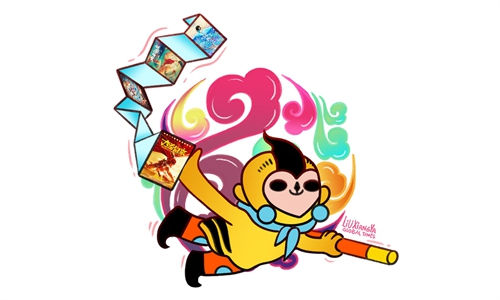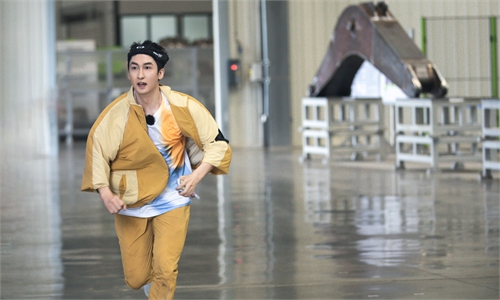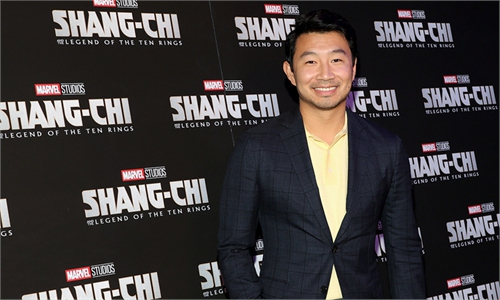ARTS / FILM
Animated film ‘Chang An’ love letter to golden age of poetry

Illustration: Liu Xiangya/Global Times
Ten days after its debut on the silver screen, the animated film Chang An is making history as a dark horse during China's bustling summer movie-going season by taking in as much as 600 million yuan ($84 million) at the Chinese mainland box office and igniting feelings of poetic romance in the hearts of moviegoers.
Sitting in the cinemas crowded with moviegoers of all age groups, the audience eagerly recited poetry alongside the protagonists on screen as they headed down memory lane with a renowned poet from the Tang Dynasty (618-907).
It is an enthusiasm for Chinese people, yet it also resonates with everyone passionate about life. Through this movie, the fine traditional Chinese culture that is Tang poetry allows the world to learn more about the "Chinese Poetry Universe."
The story of the profound friendship between poet Gao Shi and the master of romantic poetry Li Bai offers a glimpse into the star-studded history of the Tang era, which is often seen as a golden age in Chinese history due to its economic prosperity and cultural integration and advancement.
The 48 Tang poems featured in the movie present a panorama of the most excellent poets of that time as well as their political aspirations and ideals.
As the unique charm and soul of the movie, these poems help audiences travel from the sandy desert frontier to the mist-filled regions south of the Yangtze River.
The movie is undoubtedly a masterpiece showing the characteristics of Chinese culture to the world. In China, we regard poets and their poems as national treasures. These poems describe not only the historical changes of a dynasty, but also people's understanding and perception of the world. Chang An is like a moving scroll that allows audiences around the globe to become immersed in the world of ancient poetry.
The film's success reflects people's rediscovery and recognition of traditional Chinese culture.
In an unprecedented way, it has raised the audience's awareness and enhanced their love and belief in Chinese culture.
While older moviegoers may be familiar with the poems depicted in the movie, younger audiences, especially Gen Z, get to enter a new and unique world through the movie, re-discovering and appreciating the essence and charm of Chinese culture.
The success of Chang An lies not only in its artistic expression, but also in its creative way of respecting and inheriting traditional culture.
With today's rapid social and scientific development and innovative communication means, it is a challenge for us to keep moving forward, innovating while respecting the past and presenting Chinese civilization in a more modern way.
The movie Chang An not only provides a successful example of this, but also opens a new chapter for Chinese animation.
After learning from animation giants like the US and Japan and absorbing Hollywood's experience in creating cinematic universes, China's animation industry is turning to the country's flourishing culture, including Tang poetry and the poets living in that era, for inspiration.
Previously, the movie producer had created a series of films, including White Snake and New Gods: Yang Jian, based on Chinese mythology, and now it is seeking to create a new franchise based on actual history and culture.
Such a "Chinese Cultural Universe" will not only allow Gen Z to appreciate and empathize with traditional culture more easily, but also uplifts Chinese artistic styles and the spirit of the Chinese: pursuing ideals unfazed whatsoever by adversity.
Chinese moviegoers could feel their inner world and outer pursuits become strongly connected when, in the film, poet Li Bai read out one of his most famous works, Jiang Jin Jiu or Invitation to Wine, to toast his friends:
When life goes well, be joyous
Never show the moon an empty cup
Heaven gave me talent for a reason
Spent now, riches return in season




